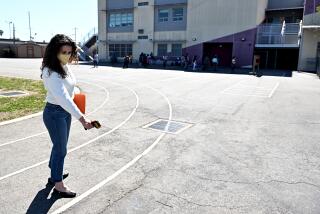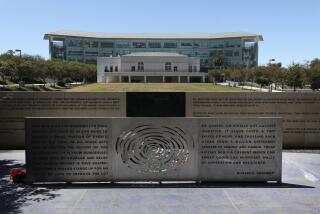Cooling Units at Historic School to Be Removed
- Share via
Los Angeles school officials have agreed to dismantle portions of a $2-million air-conditioning system that altered the appearance of a historic Eastside high school.
Giving in to pressure from community groups and architects, the district said it will remove large cooling units and electrical conduits that were attached to the exterior of Lincoln High School.
Lynn Roberts, head of the district’s $2.4-billion bond construction project, said a school design committee will help to decide how to make the air-conditioning system compatible with the campus’ Depression-era Moderne and Art Deco style.
Roberts conceded that the work had been done with too much emphasis on speed and cost. “When we first started, we were trying to do everything as quickly as we could,” Roberts said. “We realized the quickest and cheapest is not necessarily the best.”
The district will pay for the alterations by combining bond and future school modernization funds, Roberts said.
Lincoln was built in the late 1930s under President Franklin Roosevelt’s Works Progress Administration, which sought to pull the country out of the Depression by putting people to work on public construction.
The school was the scene of student walkouts in 1968 that gave rise to the Chicano rights movement.
Several buildings on the campus have been designated as eligible for the National Register of Historic Sites.
School staff and alumni and a neighborhood preservation group reacted angrily to the air-conditioning installation, which began last year.
However, they said their concerns were ignored until they brought them to the volunteer committee that oversees the Proposition BB bond construction.
At the committee meeting Wednesday, members said they were determined to prevent any Proposition BB projects from defacing any of the district’s many other historic buildings.
A representative of the Los Angeles Conservancy said he would work with district officials to identify schools with historic value.
More to Read
Sign up for Essential California
The most important California stories and recommendations in your inbox every morning.
You may occasionally receive promotional content from the Los Angeles Times.











